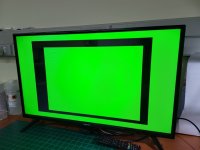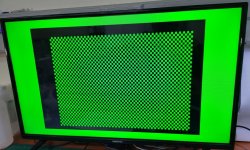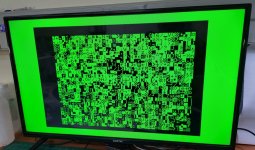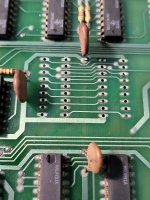daver2
10k Member
With the character generator out of the socket - we can fully test the parallel to serial shift register (B2) and subsequent logic by 'hard wiring' the data output pins of the (now removed) character generator ROM socket to +5V and 0V (via low-valued resistors). This should give you different vertical lines, one line for each data bit pulled high...
You would also be advised to carry on with your scoping of the various counters etc. to see if anything else is clearly amiss. For example, the outputs from A1 should be clocking away happily. These three bits to the character ROM address the individual vertical lines of the character formation.
Dave
You would also be advised to carry on with your scoping of the various counters etc. to see if anything else is clearly amiss. For example, the outputs from A1 should be clocking away happily. These three bits to the character ROM address the individual vertical lines of the character formation.
Dave





